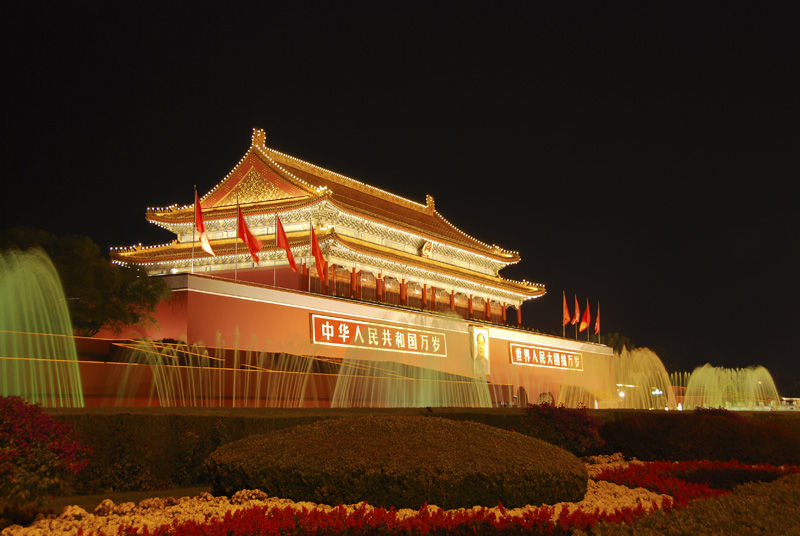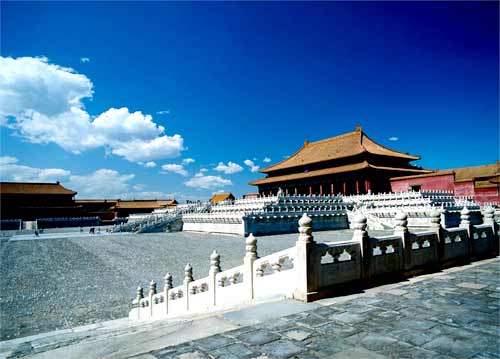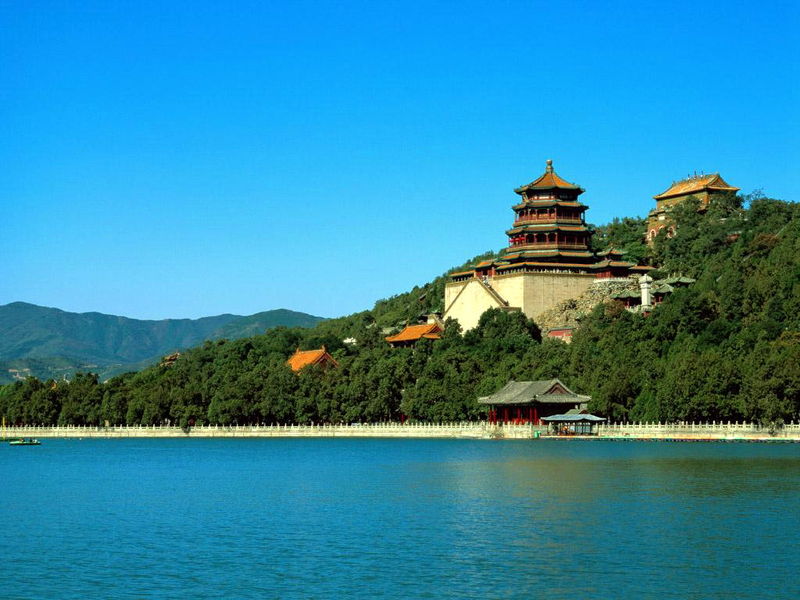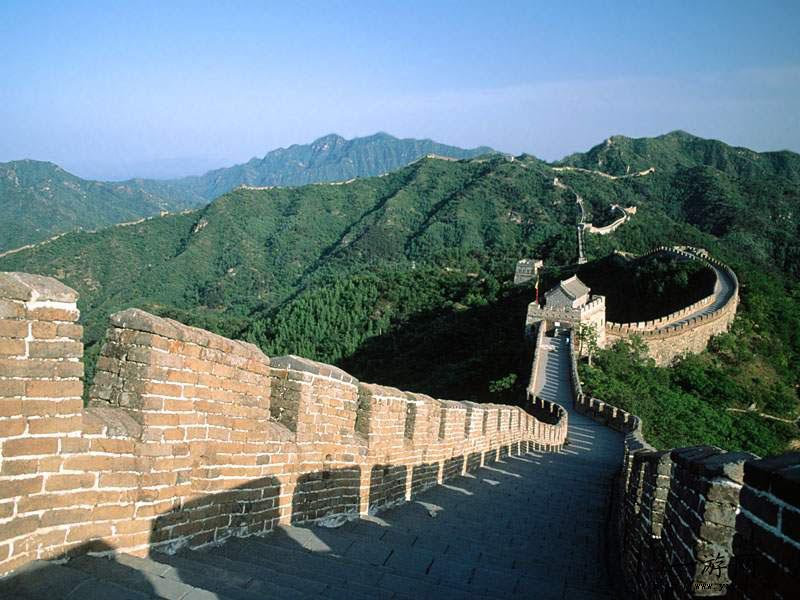| The Tian' an Men Square |
 |
Tian¡¯an men( the Gate of Heavenly Peace), is located in the center of Beijing. It was first built in 1417 and named Chengtianmen. At the end of the Ming Dynasty, it was seriously damaged by war. When it was rebuilt under the Qing in 1651, it was renamed Tian¡¯anmen, and served as the main entrance to the Imperial City.On October 1, 1949, chairman Mao Zedong proclaimed on Tian¡¯anmen Rostrum the founding of the People¡¯s Republic of China. Since then, Tian¡¯anmen has been the symbol of New China and has witnessed many historical events in China¡¯s modern history. |
|
|
| The Forbidden City |
 |
The Forbidden City was the Chinese Imperial palace from the mid-Ming Dynasty to the end of the Qing Dynasty. It is located in the middle of Beijing, China. It now houses the Palace Museum.The complex consists of 800 buildings with 8,886 rooms. It covers 720,000 square metres. The Forbidden City was declared a World Heritage Site in 1987 as the "Imperial Palace of the Ming and Qing Dynasties",and is listed by UNESCO as the largest collection of preserved ancient wooden structures in the world. |
|
|
| The Summer Palace |
 |
The Summer Palace, dominated mainly by Longevity Hill and Kunming Lake, covers an area of 2.9 square kilometers, three quarters of which is under water. Its 70,000 square meters of building space features a variety of palaces, gardens and other ancient-style architectural structures. Well known for its large and priceless collection of cultural relics,it was listed as a World Heritage by UNESCO in 1998. |
|
|
| The Great Wall |
 |
The Great Wall of China, one of the greatest wonders of the world, was listed as a World Heritage by UNESCO in 1987. Just like a gigantic dragon, the Great Wall winds up and down across deserts, grasslands, mountains and plateaus, stretching approximately 8,851.8 kilometers (5,500 miles) from east to west of China. With a history of more than 2000 years, some of the sections are now in ruins or have disappeared. However, it is still one of the most appealing attractions all around the world owing to its architectural grandeur and historical significance. |
|
|
| The National Stadium |
 |
The National Stadium, known as the "Bird's Nest," was served as the main venue of the 2008 Beijing Olympic Games. It is located in the Olympic Green and occupies 21.4 hectares. It stretches 333 meters from north to south and 298 meters from east to west, covering an area of 258,000 square meters. The National Stadium is 68 meters high and holds 91,000 seats. The opening and closing ceremonies of the 2008 Olympic Games, Athletics and Football events was hold in it. The construction of the National Stadium began in December of 2003 and completed in June of 2008. |
|
| |
|



